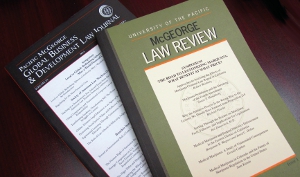Linguistics and 'ordinary meaning' determinations
Document Type
Article
Publication Date
2012
Abstract
Undoubtedly, the most fundamental axiom of legal interpretation is that words in texts should receive their 'ordinary meaning'. Notwithstanding its talismanic invocation by the judiciary, the ordinary meaning concept has been poorly developed by courts. In particular, courts rely on a meaning postulate approach where they define words without regard to critical sentential (i.e. sentence level) context. The reality, though, is that meaning is distributed in nature. By ignoring semantic regularities, courts risk determining the 'possible' meaning of text rather than its ordinary meaning. Particularly in the area of statutory interpretation, such an approach contravenes many of the judiciary's other interpretive tools, which consistently favor stability, though narrow interpretations, over change. This article examines a paradigmatic set of Supreme Court cases that illustrate the judiciary's unsystematic approach to ordinary meaning determinations and advocates an interdisciplinary approach to ordinary meaning that incorporates developing cognitive science and linguistic insights. Specifically, this article argues that courts should consider the generative lexicon (GL) theory of lexical semantics when attempting to define the ordinary meaning of text. GL focuses on capturing valid generalizations about words, and its generative mechanisms seek to produce interpretations that reflect words' combinatorial properties. Instead of the judiciary's current ad hoc approach, GL should be used to generate default ordinary meaning interpretations that would be subject to shaping by the judiciary's other interpretive tools. By adopting GL, and thereby taking seriously cognitive science and linguistic advances, courts would be embracing a true 'linguistic turn' in legal interpretation. © The Author 2012. Published by Oxford University Press. All rights reserved.
Publication Title
Statute Law Review
ISSN
0144-3593
Volume
33
Issue
1
DOI
10.1093/slr/hmr025
First Page
39
Last Page
83
Recommended Citation
Brian G. Slocum,
Linguistics and 'ordinary meaning' determinations,
33
Statute Law Review
39
(2012).
Available at:
https://scholarlycommons.pacific.edu/facultyarticles/401



